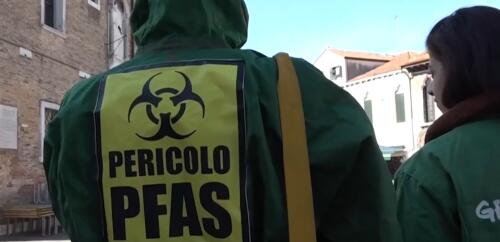PFAS
Your child could go to gym class on Monday morning and play soccer on a field that was sprayed over the weekend with 2,4-D, a toxic weedkiller that has been investigated as possibly causing cancer. Alternatively, the school grounds may have been treated with a lower-toxicity weedkiller. Or maybe the grounds were managed with safe, nontoxic products and techniques. Which of these scenarios applies depends in large part on your state’s laws and regulations today – more so than federal regulations. For example, Texas requires all school districts to adopt an integrated pest management program for school buildings; IPM prioritizes nonchemical pest control methods and includes some protections regarding spraying of grounds. Massachusetts also restricts pesticide use on school grounds. Illinois requires IPM for school buildings only if economically feasible. States also vary greatly in the education and technical assistance they provide to implement these practices....
The U.S. Environmental Protection Agency is preparing to release a draft regulation limiting two fluorinated chemicals, known by the abbreviations PFOA and PFOS, in drinking water. These chemicals are two types of PFAS, a broad class of substances often referred to as “forever chemicals” because they are very persistent in the environment. PFAS are widely used in hundreds of products, from nonstick cookware coatings to food packaging, stain- and water-resistant clothing and firefighting foams. Studies show that high levels of PFAS exposure may lead to health effects that include reduced immune system function, increased cholesterol levels and elevated risk of kidney or testicular cancer. Population-based screenings over the past 20 years show that most Americans have been exposed to PFAS and have detectable levels in their blood. The new regulation is designed to protect public health by setting an enforceable maximum standard limiting how much of the two target ch...
Out of 31 samples collected in the drinking water of a series of municipalities in Lombardy, 11 - equal to approximately 35% of the total - were contaminated with Pfas, perfluoroalkyl substances produced by industries and associated with numerous pathologies, including some forms of cancer.This is what emerges from the report "Pfas and drinking water in Lombardy, Greenpeace Italia sampling", just published by the environmental organisation, in which the results of a monitoring conducted in all 12 Lombardy provinces are presented, in which important "critical issues regarding contamination" are confirmed. The samples were collected between May 12th and 18th, in most cases from public fountains that are located near primary schools or children's playgrounds, and then examined in an independent laboratory.The presence of PFAS was certified in the waters of the provinces of Bergamo, Brescia, Como, Milan, Lodi and Varese.The organization has recorded Pfas contamination a...
Paper and bamboo straws, generally considered more environmentally friendly than plastic ones, contain perfluoroalkyl and polyfluoroalkyl substances (PFAS) and could be harmful to the environment as well as to people's health:is what emerged from one study recently published in the journal Food Additives & Contaminants:Part A and conducted by Belgian researchers from the University of Antwerp.The latter, examining 39 different brands of straws made of paper, bamboo, glass, stainless steel and plastic, not only discovered that PFAS were present in the majority of the products tested, but also that the straws contained the most such substances of paper and bamboo. Specifically, 69% of straw brands analyzed contained PFAS, for a total of 18 different chemical substances:a massive presence, which however has nothing to do with that found in the brands of paper and bamboo straws.In fact, 90% of the brands of paper straws tested were contaminated with PFAS, which were then present in 80%...



